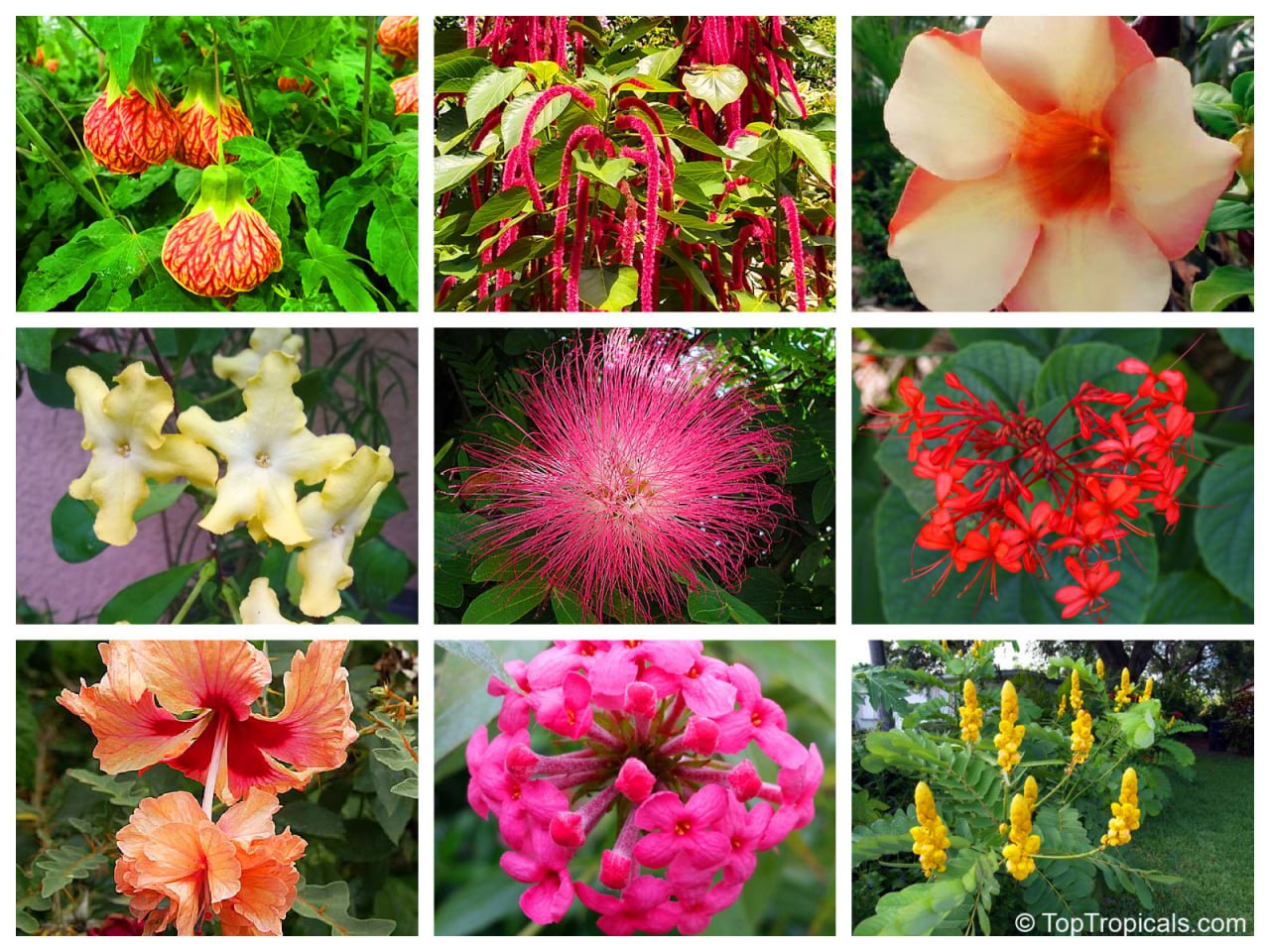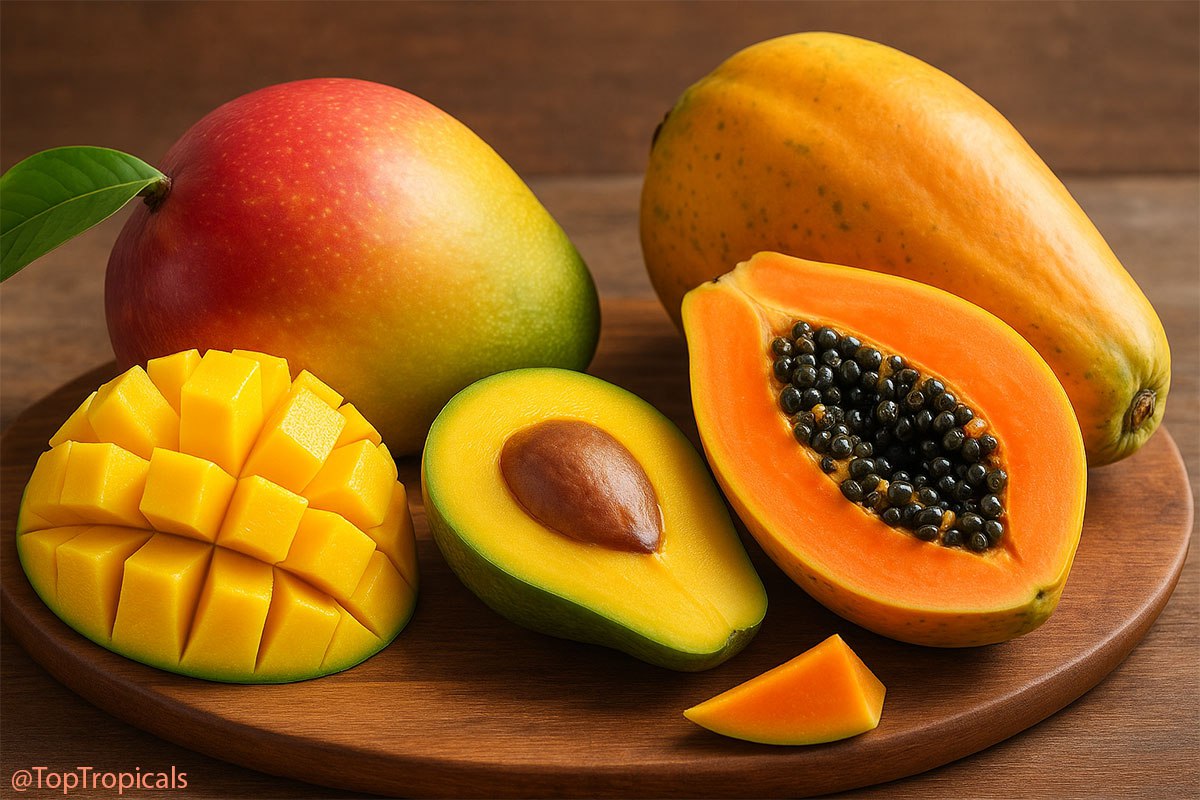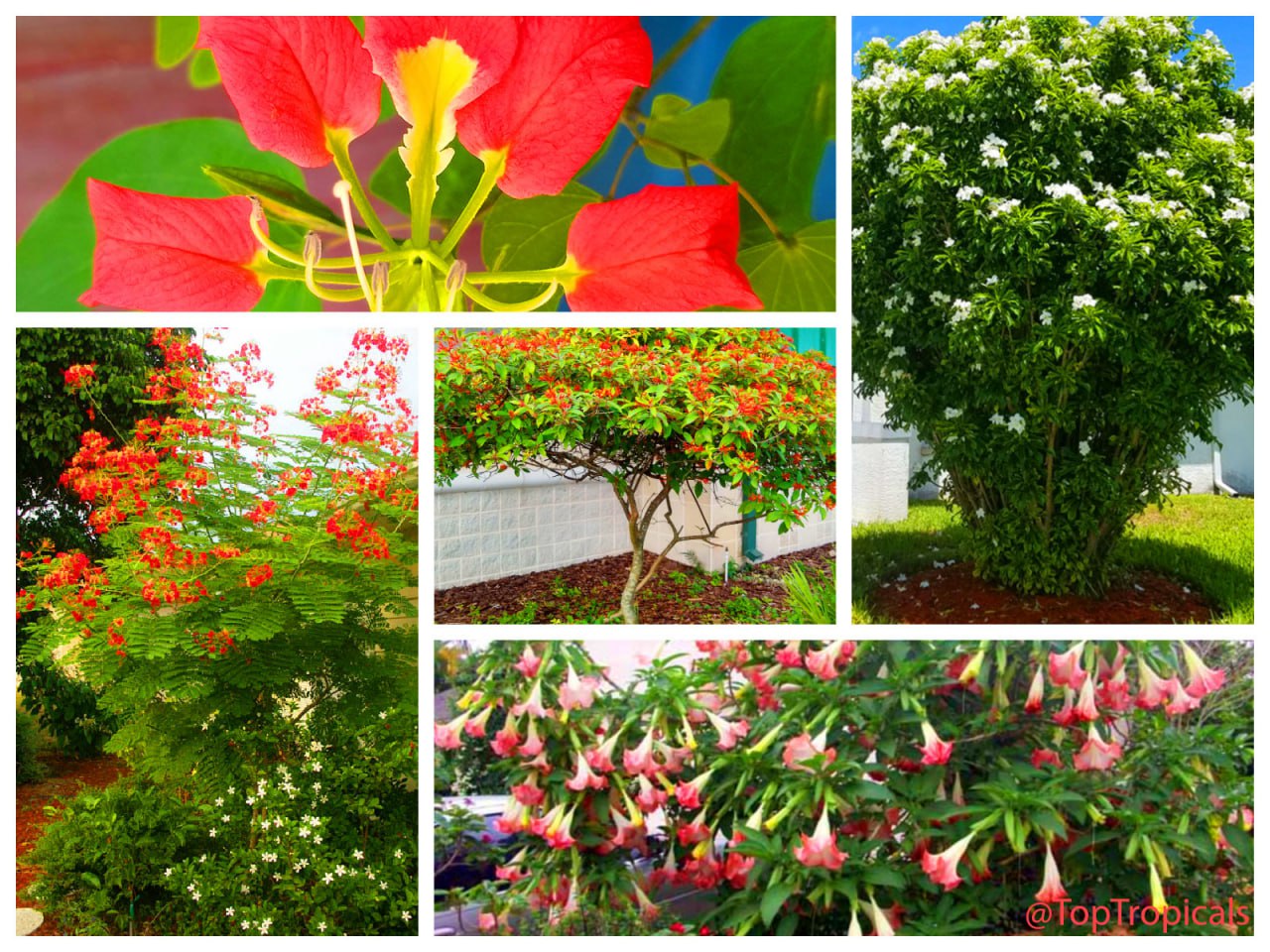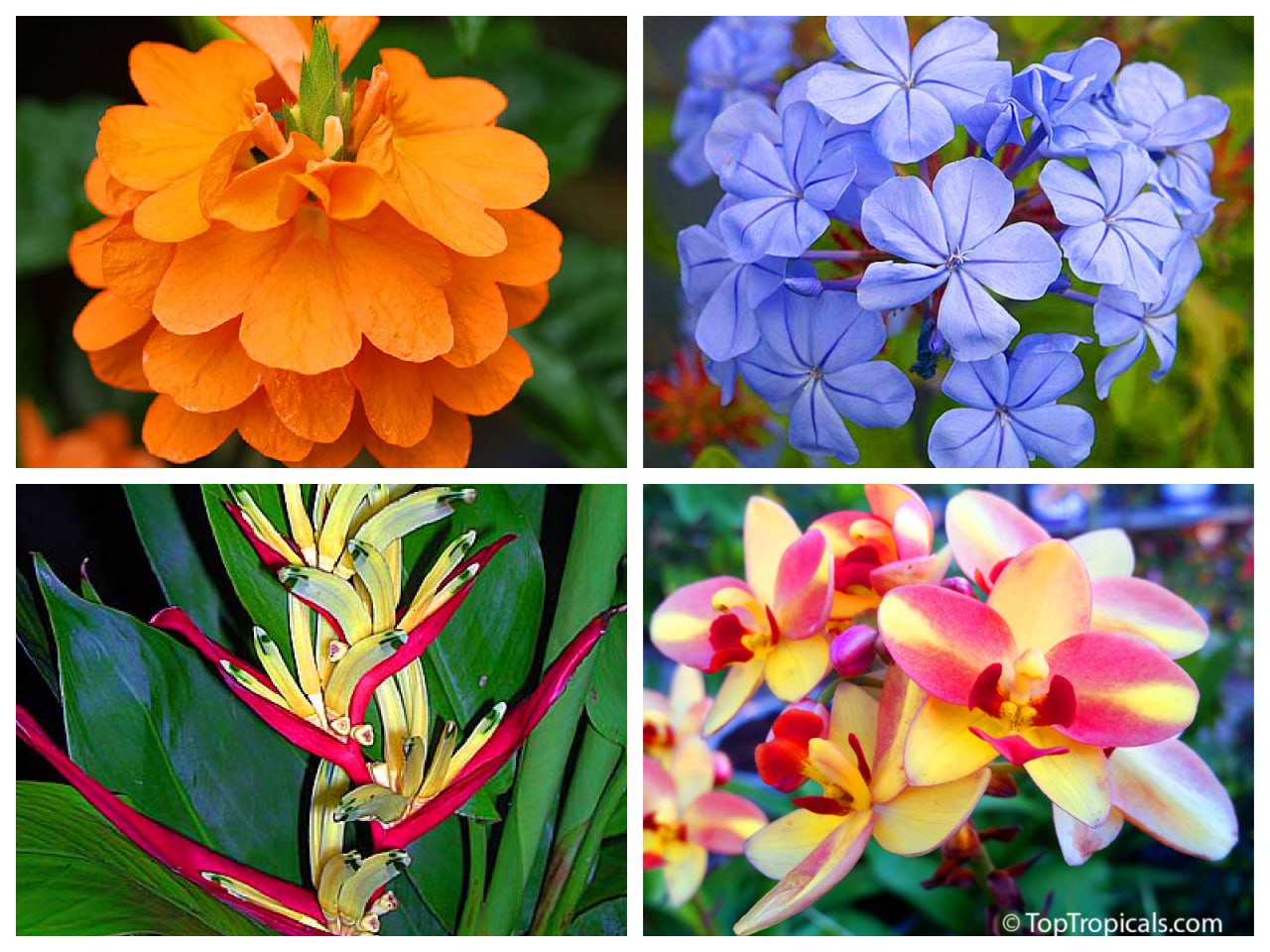Garden Blog - Top Tropicals
How to make lots of Insulin Ginger plants quickly and get more health benefits
Costus igneus (Chamaecostus cuspidatus) - Fiery Costus or Spiral Flag
- Costus igneus (Chamaecostus cuspidatus) - Fiery Costus or Spiral Flag is believed to help lower blood glucose levels naturally and managing diabetes.
- Have you heard of Insulin Ginger? Everyone wants to have it in the garden!
- Gardeners in India grow it not just for its pretty spiral leaves, but for what those leaves do. People with diabetes often chew them fresh or brew them into tea, saying it helps keep their blood sugar under control.
- Researchers have found something interesting: the leaves contain an insulin-like compound, along with antioxidants and anti-inflammatory properties. In animal studies, extracts from the plant lowered blood sugar, protected the liver and kidneys, and even made the body more sensitive to insulin.
- The way folks use it is simple. You can chew a leaf right off the plant, steep dried leaves for tea, or find it in powders and capsules. It's one of those plants that shows how tradition and science sometimes meet in the garden.
- Its lush, turmeric-like leaves spiral around upright stems, with a glossy dark green top and a striking light purple underside. In warm months, it produces bright orange, cone-like flowers that stand out beautifully in the garden.
- Beyond its beauty and natural insulin effects, the insulin plant is credited with aiding digestion, reducing cholesterol, boosting energy, improving skin health, supporting weight loss, relieving stress, and promoting heart wellness. A real botanical multitasker!
🎥 In this video, we’ll show you how to multiply Insulin Ginger fast, so you’ll have plenty of plants for yourself and even extras to share with friends and family.
✅ Don’t forget to use Green Magic fertilizer for the best results. Gingers absolutely love this plant food - they thrive on it and respond better than any other plant, with vigorous growth, lush foliage and loads of leaves you’ll need for all the benefits.
🛒 Grow your own sugar-fighter - the Insulin Ginger
📚 Learn more:
#Food_Forest #Remedies #Shade_Garden #Discover
🟢 Join 👉 TopTropicals
Truth about which fruit helps you lose weight faster: Mango or Papaya?
❓ Mango vs. Papaya: what's best for you?
✔️ Nutritional comparison
✔️ Health perks
✔️ Calories and sugars
✔️ Weight loss support
✔️ Which to pick when
Mango is rich in vitamins A and C, boosting immune health and skin.
Papaya brings more folate and contains papain, an enzyme that aids digestion.
Mango may help lower inflammation and support blood sugar balance.
Papaya is known to ease digestion, reduce bloating, and support gut health.
Both are low in calories, but mango has slightly more natural sugar.
If you’re sugar-sensitive, papaya might be the better option.
Mango and papaya both contain fiber and natural compounds that slow digestion.
This helps you feel fuller longer, which can reduce snacking and support weight management.
Choose mango for a skin and immune boost.
Go with papaya if you want a gentler fruit that supports digestion and gut comfort.
Don't forget about Avocado when planting your fruit garden!
Avocado deserves a spot at the table too. While not sweet like mango or papaya, it's packed with heart-healthy monounsaturated fats, fiber, potassium, and B vitamins. Avocado supports brain and heart health, keeps you full longer, and provides a creamy balance to any tropical fruit plate.
All three fruits are also great for weight management. They're high in fiber and water content, which slows digestion, helps you feel fuller longer, and may reduce overall calorie intake naturally.
🛒Explore Mango, Papaya, and Avocado varieties
#Food_Forest #Mango #Papaya #Remedies #Discover
🟢 Join 👉 TopTropicals
Nine best tropical shrubs that will bloom for you all summer

Abutilon darwinii x striatum - Fireball, Biltmore Ballgown, Acalypha hispida - Cat Tail, Chenille plant, Allamanda, Brunfelsia - Lady of the night, Calliandra - Powderpuff, Clerodendrum speciosissimum - Java Glorybower, Hibiscus El Capitolio, Rondeletia leucophylla - Panama Rose, Senna alata - Empress Candle, Candelabra Plant
📸 Pictures for the previous post:
- ▫️Abutilon darwinii x striatum - Fireball, Biltmore Ballgown
- ▫️Acalypha hispida - Cat Tail, Chenille plant
- ▫️Allamanda
- ▫️Brunfelsia - Lady of the night
- ▫️Calliandra - Powderpuff
- ▫️Clerodendrum speciosissimum - Java Glorybower
- ▫️Hibiscus El Capitolio
- ▫️Rondeletia leucophylla - Panama Rose
- ▫️Senna alata - Empress Candle, Candelabra Plant
🛒 Explore most spectacular flowering shrubs
#Hedges_with_benefits #Discover
🟢 Join 👉 TopTropicals
9 best tropical shrubs that bloom all summer long or year around
Abutilon darwinii x striatum - Fireball, Biltmore Ballgown, Acalypha hispida - Cat Tail, Chenille plant, Allamanda, Brunfelsia - Lady of the night, Calliandra - Powderpuff, Clerodendrum speciosissimum - Java Glorybower, Hibiscus El Capitolio, Rondeletia leucophylla - Panama Rose, Senna alata - Empress Candle, Candelabra Plant
- 🌺 1. Abutilon darwinii x striatum - Fireball, Biltmore Ballgown. Lantern-like blooms in orange, red, and yellow keep coming all summer. Compact and graceful, perfect for pots or borders.
- 🌺 2. Acalypha hispida - Cat Tail, Chenille plant. Fuzzy red tassels dangle nonstop in the heat, adding playful texture to containers and garden beds.
- 🌺 3. Allamanda (many varieties). Fast growers with trumpet flowers in yellow or pink. Can be shaped as shrubs, trellised vines, or flowering hedges.
- 🌺 4. Brunfelsia - Lady of the night. Creamy white blooms open at dusk, filling the evening garden with a sweet fragrance.
- 🌺 5. Calliandra - Powderpuff (many varieties). Cheerful pompom flowers in red, pink, or white attract hummingbirds and bloom nearly year-round.
- 🌺 6. Clerodendrum speciosissimum - Java Glorybower. Bright red flower clusters stand out against tropical foliage. Loves sun and steady moisture.
- 🌺 7. Hibiscus El Capitolio - Unique, double-skirted, ruffled pendant blooms with pom-pom-like centers make this hibiscus a showpiece shrub for summer gardens.
- 🌺 8. Rondeletia leucophylla - Panama Rose. Compact and butterfly-friendly, with fragrant pink flower clusters that perfume warm evenings.
- 🌺 9. Senna alata - Empress Candle, Candelabra Plant. Bold, upright candles of golden flowers shine through the season and draw in pollinators.
🛒 Explore most spectacular flowering shrubs
#Hedges_with_benefits #Discover
🟢 Join 👉 TopTropicals
What flowers do NOT attract bees?
Butterfly on a flower that doesn't attract bees
Most tropical flowers bring in pollinators, and bees are usually first in line. But what if you’d rather avoid them? Maybe you’re allergic, or just don’t want bees buzzing around. Good news: some flowers attract butterflies, hummingbirds, moths, or even flies - but not bees.
- 👉 Quick rules:
- ✔️ Night-blooming + strong fragrance = moths or bats, not bees.
- ✔️ Red tubular flowers with little scent = hummingbirds or butterflies, not bees.
- ✔️ Rotten or fermented smell = flies, not bees.
- ✔️ Carnivorous plants = trap insects, no bee nectar.
1. Night-blooming, fragrant - moth and bat flowers
Bees forage by day, so many night-fragrant flowers skip them.
- ▫️Brugmansia - Angel’s Trumpet - big, hanging blooms, moth and bat pollinated.
- ▫️Cestrum nocturnum - Night-blooming Jasmine - powerful night scent, moths only.
- ▫️Hylocereus Dragon Fruit - huge cactus flowers, bats and moths.
- ▫️Brunfelsia - Lady of the Night - sweet fragrance at dusk, no bee interest.
- ▫️Hibiscus - hummingbirds and butterflies visit, bees less so.
- ▫️Heliconis and Gingers - designed for hummingbird beaks, bold tubes are for birds, not bees.
- ▫️More good picks: Ruellia, Sanchezia, Aeschynanthus, Aphelandra, Anisacanthus, Cuphea, Fuchsia, Iochroma, Justicia, Lonicera, Hamelia, Russelia, Odontonema, Tecomaria, Bougainvillea.
- ▫️Amorphophallus (Voodoo Lily) - rotting meat scent.
- ▫️Tacca (Bat Head Lily) - spooky black flowers, fly-pollinated.
- ▫️Stapelia (Carrion Flower) - also fly-pollinated.
- ▫️Aristolochia (Pelican Flower) - giant, bizarre fly-traps.
- ▫️Vanilla orchid - its natural bee pollinator is absent in most regions, so no bee appeal elsewhere.
- ▫️Brassavola nodosa and others - open at night for moths, not bees.
- ▫️Nepenthes (Pitcher Plant) - uses pitchers of liquid to lure and digest insects.
2. Hummingbird and butterfly flowers
Bees don’t see red well. Tubular reds, oranges, and yellows usually go to birds and butterflies.
3. 🐱 Fly-pollinated oddballs
Some flowers smell bad to us but irresistible to flies.
4. 🌸 Specialized orchids
Not all orchids rely on bees. Many use moths, butterflies, or beetles instead.
5. 🕷 Bonus: carnivorous curiosities
Carnivorous plants don’t offer nectar. They trap insects instead, so bees stay away.
These flowers keep the beauty, fragrance, and wildlife appeal - but without making your garden a bee hotspot.
🛒 Explore butterfly attractors
#Butterfly_Plants #How_to #Discover
🟢 Join 👉 TopTropicals


